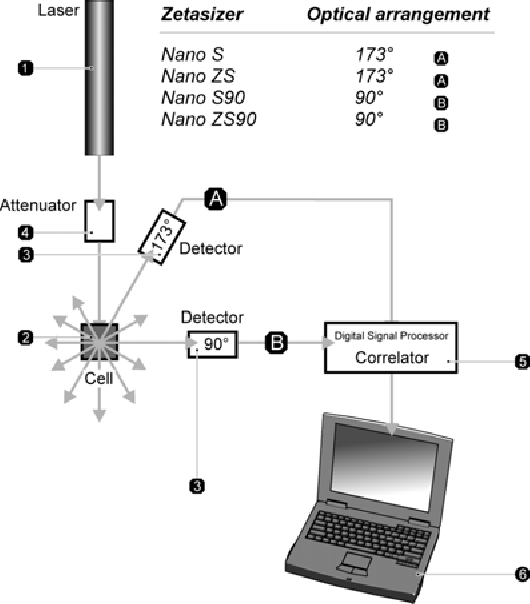

Depending on how fast particles are diffusing, the correlation decay time constants, which are derived from the exponential auto-correlation function (ACF) are individually different. Scattering intensity pattern are correlated with themselves (auto- correlation) after short delay intervals of time (τ) to monitor the continuous decay of correlation. 6.2), which results in characteristic size- dependent fluctuation intervals of the electric field component of the scattered light. This is explained by Brownian motion of particles in and around the sample volume that is in focus of the laser (Fig.

The number of photons hitting the detector, which can be a photo-multiplier tube, is fluctuating over time. The laser light that is scattered by the particles inside a small focal volume of a DLS sample is continuously recorded and quantified by a photon-counting detector positioned at a specific angle if not hindered by other geometrical restraints, an angle of 90° might be suitable for the experimental setup. In general, all kinds of particles scatter electromagnetic waves in all directions, depending on their size isotropically or anisotropically. Exemplary biological applications were discussed in addition more recently (Minton 2016).
#Dynamic light scattering mathematics series#
Areas of applications and especially much further physical detail of light scattering and data processing were covered for example by Berne and Pecora ( 2000) and within the series of Light Scattering Reviews books edited by Kokhanovsky ( 2006). The chapter overall focuses on exemplary biochemical sample solutions and the respective applications, even though all principles are well applicable to other fields of natural sciences targeting nano particles. Further a short section is summarizing selected complementary analytical methods. An additional section will provide practical guidelines and hints for sample preparation. 1970), the monomodal cumulant analysis (Koppel 1972) and the CONTIN algorithm (Provencher 1982) are a few of the milestones.Īfter briefly explaining the physical principles and requirements of light scattering techniques, different biological samples, recently established setups for in situ DLS experiments and selected applications will be introduced. In terms of data processing, digital autocorrelators (Foord et al.

19 Fujime 1972), whereas the development of single-mode fiber cables, improvement of detection optics, variation of sample containers and introduction of affordable diode-pumped solid-state lasers as light source advanced the applications of DLS tremendously later on and particularly during the last years (Brown 1987 Dhadwal and Chu 1989 Brown and Smart 1997 Minton 2016). The method DLS and underlying principles are known for several decades already (Mueller and Givens 1961 Cummins et al. Details about data processing are described in the following sections Autocorrelation function, half-logarithmic mean particle radius distribution and particle radius plot of the molecules are indicating a homogeneous monodisperse solution and a hydrodynamic radius of 2.4 ± 0.1 nm. b Exemplary DLS data of an L-form DNAzyme (5′-GAAGTTAGCAACATCGATCGGAGGCGG-3′) in solution containing MES buffer as evaluated by the accompanying software. Light scattered by the particles over time at a scattering angle θ is focused onto a detector or detector-connected fiber cable for further downstream data processing.


 0 kommentar(er)
0 kommentar(er)
